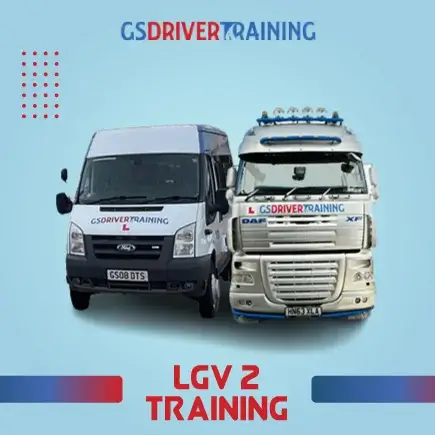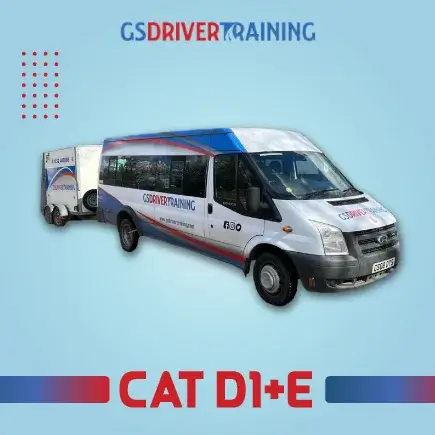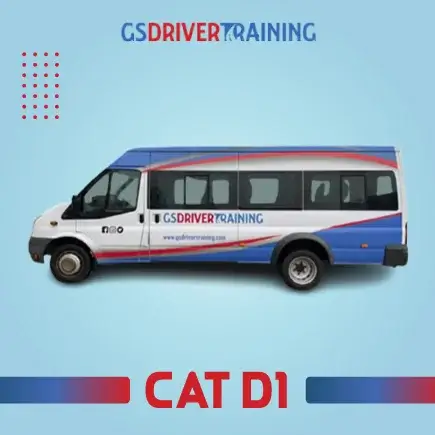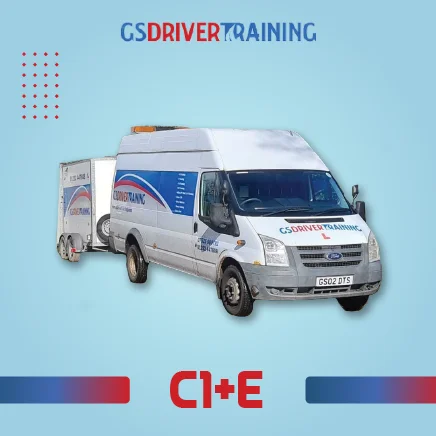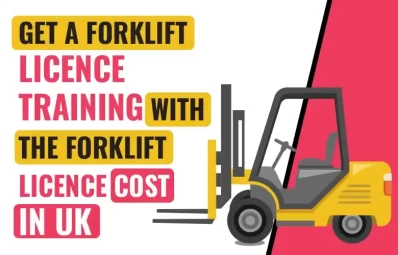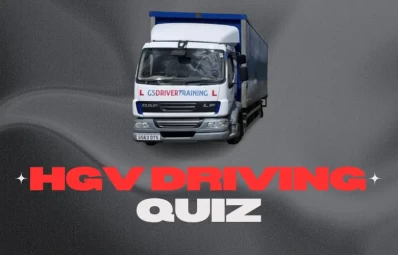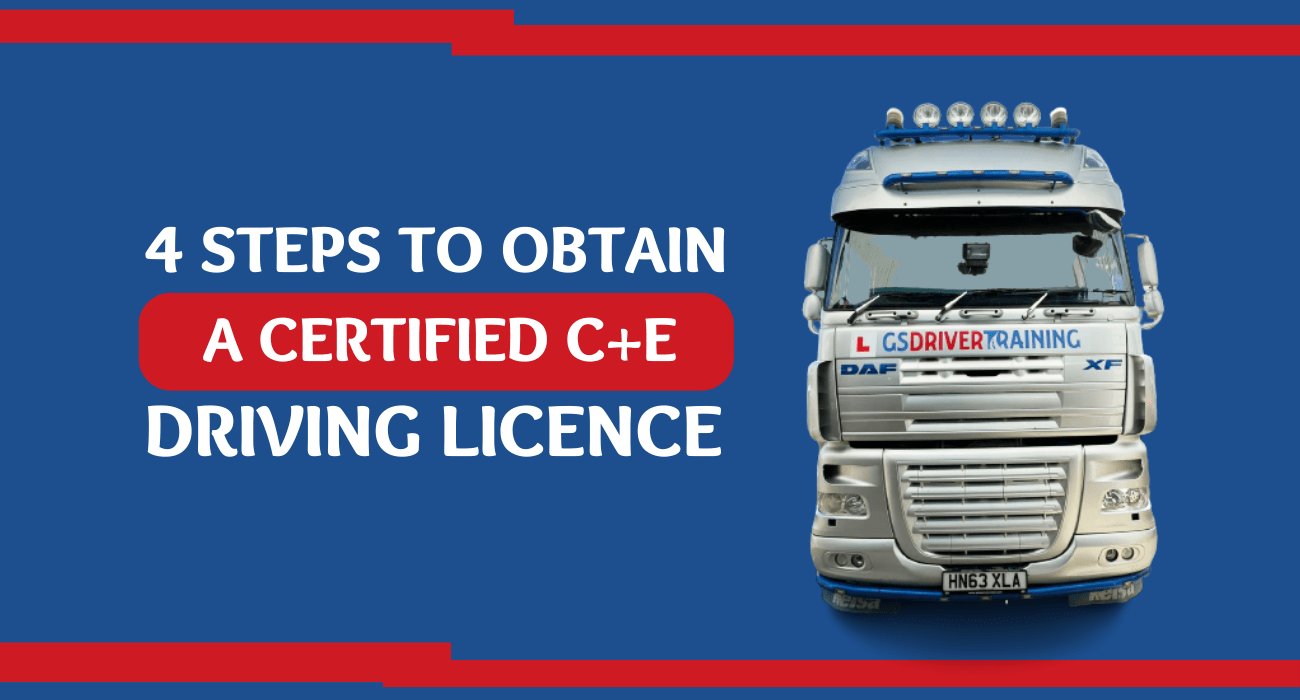
Well, the large-good vehicle is commonly referred to as Heavy Good vehicle. These vehicles can be only driven by a qualified driver and who knows how to operate a lorry over 3,500 kg. The main responsibility of LGV Drivers is to transport goods from supplier to customer. Gone of the days where you have to first get your c driving licence you can now go straight to the c+e licence.
While driving high lorry vehicles one can start their best career into it. Though, there are some basic steps that you must take care to achieving C+E Driver licence in UK. On the other hand, to drive through the licensing process, you will find a number of companies that provide the full driver training courses. Before, you hand-over your money thinks about the benefits that you will get by these training courses .
Obtaining a certified CE driving license, which allows you to drive articulated vehicles (commonly referred to as Class 1 in some regions), involves a series of steps. The specific requirements and process may vary depending on your country or region. Below are the general steps you might need to follow:
Following are been defined some steps for obtaining a C+E Driving licence
1: Obtain a car Driver Licence
As such, there are few hoops to jump through which you can get on to the road. But don’t let this hold your back. If you don’t have a car driving licence then you must get that first. if you already have a car licences then you are on the right page to find out how to get your c+e licence. which is the top of the hgv category.
2: Apply for Provisional hgv training Licence
To apply for an HGV (Heavy Goods Vehicle) provisional license in the UK, which allows you to begin training to become a professional HGV driver, you'll need to follow these steps:
Meet Eligibility Requirements
Ensure that you meet the eligibility criteria, which usually include:
Holding a valid Category C (rigid) driving license it no longer a must have as the rules have changes meaning you can go for car to artic.
Being at least 21 years old (or 18 years old if you are completing your CPC)
Meeting any specific medical requirements.
You will need to hold a valid (B) car driving license before applying for a CE license.
Complete a D2 Application Form
Obtain a D2 application form from the Driver and Vehicle Licensing Agency (DVLA). You can find these forms at a post office or online on the DVLA website.
Get a D4 Medical Examination Form
Alongside the D2 form, you'll also need a D4 medical examination form.
Schedule a medical examination with a registered medical practitioner (doctor) who is familiar with HGV medical assessments. They will complete the D4 form, which certifies your physical fitness to drive an HGV.
Be prepared to pay for the medical examination, as it is not typically covered by the NHS.
Complete the Application Forms
Fill out the D2 and D4 forms carefully and accurately. Double-check that you've provided all the necessary information.
Include a passport-sized photo with your D2 application.
Sign and date both forms.
Send Your Application
Mail your completed D2 and D4 forms, along with the required fee (check the current fee on the DVLA website), to the address specified on the D2 form.
Keep copies of all your application documents for your records.
Wait for Your Provisional License
It may take a few weeks for the DVLA to process your application and issue your provisional license.
Once you receive it, you'll be legally allowed to begin HGV training.
3: HGV Theory Tests
Multiple-Choice Test (Module 1a)
The multiple-choice test is the first part of the HGV theory tests (Module 1a).
It consists of a set of multiple-choice questions related to various topics, including road safety, vehicle operation, and traffic regulations.
You will be presented with a question and a list of potential answers. You need to select the correct answer or answers from the choices provided.
The multiple-choice test aims to assess your theoretical knowledge of HGV driving and road safety.
Hazard Perception Test (Module 1b)
The hazard perception test is the second part of the HGV theory tests (Module 1b).
This test assesses your ability to identify potential hazards while driving and react appropriately.
You'll watch a series of video clips that simulate real driving situations. You must click the mouse button when you spot a developing hazard.
The test measures your ability to anticipate and respond to hazards on the road effectively.
Preparation for HGV Theory Tests
Study the relevant materials: Use official DVSA (Driver and Vehicle Standards Agency) publications and resources to prepare for the theory tests. These materials cover the topics you'll be tested on.
Take practice tests: Practice with mock theory tests to become familiar with the format and types of questions you'll encounter. You can find practice materials online and in official DVSA publications.
Focus on road safety: Road safety is a significant component of the theory tests. Ensure you understand the rules and best practices for safe HGV driving.
Understand HGV-specific information: Be prepared to answer questions related to HGV operation, including vehicle safety, load securing, and legal regulations.
Use hazard perception practice software: Many training providers offer hazard perception practice software to help you prepare for this part of the test.
Take your time: During the actual tests, read each question carefully and watch the hazard perception videos attentively. Don't rush through the questions.
Passing the HGV Theory Tests
To pass the theory tests, you must achieve a minimum score on both the multiple-choice test and the hazard perception test.
CPC
Another step is to qualify the theory test which is known as the Certificate of Professional Competence . If driving a lorry is a full part of your profession then there is a need to obtain CPC. While going for the tests you need to make sure that you take all your necessary documents with you. Similar to the car driving tests you need to prepare for CPC tests too. There are various learning tools available that explain theory tests and allow you to do the practice. You can start reading it by DVLA (Driver and Vehicle Licensing Agency) also.
The HGV (Heavy Goods Vehicle) theory tests are a crucial part of the process for obtaining an HGV license in the UK. These theory tests assess your knowledge of road safety, regulations, and HGV-specific information. There are two parts to the HGV theory tests:
4: Take C+E Test
Maneuvering and reversing exercises is the first part of the HGV Class 1 on-road driving test in the UK. These exercises are designed to assess your ability to handle an articulated vehicle in various challenging situations.
Reverse into a Parking Bay/ loading dock
You will be asked to reverse the articulated HGV into a designated parking bay accurately and without touching any markers or obstacles. This demonstrates your skill in maneuvering a large vehicle in tight spaces.
Uncoupling and Coupling
during the HGV Class 1 on-road driving test in the UK, you may be asked to demonstrate how to properly uncouple and couple the trailer from the tractor unit. This exercise assesses your competence in handling articulated vehicles, which is a crucial skill for HGV drivers. Here's an overview of what to expect during the uncoupling and coupling exercise:
Uncoupling
Preparation: Before uncoupling, make sure the vehicle is parked on a level surface and apply the parking brake. Ensure that the trailer landing legs are down to support the trailer when it's disconnected.
Safety Checks: Perform a thorough check to ensure that all connections are secure, and there are no obstructions or potential hazards.
Disconnect Air and Electrical Lines: Carefully disconnect the air and electrical lines that connect the trailer to the tractor unit. Be sure to follow proper procedures to avoid damage to the connectors.
Release the Fifth Wheel: Operate the fifth wheel release mechanism to disengage the trailer from the tractor unit. This typically involves pulling a release handle or operating a control inside the cab.
Reverse the Tractor Unit: After uncoupling, move the tractor unit slightly forward to clear the trailer. Ensure that the trailer's landing legs are supporting it.
Coupling
Positioning: Position the tractor unit in line with the trailer's kingpin, ensuring it's aligned correctly.
Lower Landing Legs: Ensure that the trailer's landing legs are in the raised position.
Check Height: Adjust the height of the fifth wheel to match the height of the trailer's kingpin. Use the in-cab controls to raise or lower the fifth wheel.
Back Up: Carefully reverse the tractor unit until the kingpin engages with the fifth wheel.
Lock the Fifth Wheel: Securely lock the fifth wheel in place to ensure the trailer is properly coupled.
Connect Air and Electrical Lines: Reconnect the air and electrical lines between the tractor unit and the trailer. Ensure that the connections are secure and that there are no leaks in the air lines.
Safety Checks: Perform a final safety check to ensure that all connections are secure, and there are no issues with the coupling.
Test Lights and Brakes: Verify that all trailer lights and brakes are functioning correctly.
Throughout this exercise, the examiner will assess your ability to perform each step safely and accurately. It's essential to follow proper procedures and communicate effectively during the uncoupling and coupling process. Practice and familiarity with the vehicle's controls are key to success in this part of the test.
C+E on road Test
The HGV Class 1 on-road driving test, also known as the Category C+E practical driving test, is the final assessment in obtaining your license to drive articulated vehicles (Class 1) in the UK. During this test, a certified examiner will assess your ability to safely and competently operate an articulated HGV on public roads. Here's what you can expect during the HGV Class 1 on-road driving test:
1. Vehicle Inspection
The test typically begins with a vehicle inspection. You'll be asked to conduct a thorough check of your HGV, including essential safety components like brakes, tires, lights, and steering.
The examiner will observe your inspection to ensure you identify any potential safety issues.
2. Vehicle Control:
You will be required to demonstrate your ability to control the HGV safely and smoothly. This includes handling the vehicle during startup, braking, acceleration, and gear changes.
Proper use of mirrors, signals, and vehicle positioning is crucial to maintaining safety during these maneuvers.
3. On-Road Driving Skills
You'll drive on a variety of roads, including urban, rural, and potentially motorways, depending on the test route.
The examiner will assess your ability to navigate junctions, roundabouts, and intersections safely and efficiently.
You'll need to demonstrate awareness of other road users, anticipate potential hazards, and make informed decisions.
Maneuvering and reversing exercises may also be included in the test, such as reversing into a parking bay or performing a controlled stop.
Load Safety and Securement
You may be asked questions about load safety and securement, as well as demonstrate your ability to check and secure a load properly.
Traffic Regulations
Throughout the test, the examiner will assess your knowledge of traffic regulations, road signs, and general road safety principles.
Emergency Situations
You may be tested on your ability to respond to emergency situations, such as dealing with a vehicle breakdown or an incident involving hazardous materials.
Route Following
You'll be expected to follow a designated route, which may include specific instructions or diversions provided by the examiner.
Interaction with the Examiner
During the test, the examiner will communicate with you regarding instructions and directions. It's essential to listen carefully and follow their guidance.
Test Duration
The on-road driving test typically lasts around 1.5 , but the exact duration may vary.
Assessment and Feedback
At the end of the test, the examiner will provide feedback on your performance and inform you of the result. If you pass, you'll receive your Category C+E license.
Important Tips
Stay calm and focused throughout the test.
- Follow road signs and obey traffic laws.
- Use proper mirror checks and signals.
- Demonstrate safe and responsible driving practices.
- Communicate with the examiner if you are unsure about instructions.
Passing the HGV Class 1 on-road driving test demonstrates your competence in operating articulated vehicles safely and responsibly, which is essential for a career in HGV driving. Be sure to prepare thoroughly, practice, and review relevant materials to increase your chances of success.
FAQ
Q: What is a C+E Licence?
A: A C+E licence category (also known as an LGV Class 1 licence) provides you with the necessary entitlement to drive any combination of an artic (rigid) lorry and trailer of over 750 kilograms (1650lbs).
Q: What licence categories do I need to apply for a C+E licence?
A: You will first need to obtain the C (car) and C1 (7.5 tonne) licence categories. You will also need to hold a valid Driver Certificate of Professional Competence (Driver CPC).
Q: What are the age restrictions to apply for a C+E licence?
A: To acquire a C+E licence you must be at least 18 and have held a full car (class B) licence for a minimum of two years.
Q: What training is required to obtain a C+E licence?
A: You will need to hold a valid Driver CPC in addition to taking the necessary LGV training courses. You can also apply for a fast track training course that enables you to gain your C+E licence in just two weeks.
Q: What qualify me to take a C+E licence?
A: You must have held a driving licence for at least two years and also hold a valid Driver CPC to qualify for a C+E licence.
Q: Where can I find HGV training courses?
A: You can find HGV driver training courses at driving schools and training centres across the UK. These courses are usually 5-7 days in length and will teach you the general skills and knowledge required to obtain a C+E licence.
Q: What is the difference between a LGV and HGV licence?
A: LGV stands for Light Goods Vehicle, whilst HGV stands for Heavy Goods Vehicle. Both refer to large vehicles designed to carry goods, however, a HGV is heavier and requires a C+E licence to be driven. Large Goods Vehicle
Q: What is Driver CPC?
A: Driver CPC (Certificate of Professional Competence) is a qualification required by law for lorry and bus drivers in the EU. Once obtained, the driver must complete 35 hours of periodic training every 5 years to maintain the qualification.
Q: What are the medical requirements for C+E licence?
A: In order to successfully complete a C+E licence you must be in good health and pass a medical examination. Your doctor will be able to advise you on the required medical checks.
Q: Are there any special considerations for C+E licence applicants?
A: You should be aware that any previous convictions or traffic infringements may have a bearing on your application for a C+E licence. Therefore it is important to inform the DVLA as soon as you apply, so that the decision process is not delayed.
Q: What is HGV training?
A: HGV training (Heavy Goods Vehicle) refers to the training and qualifications for individuals who wish to become commercial lorry or van drivers. It is both classroom-based and on-the-road tuition to enable them to acquire the necessary driving and safety skills and knowledge to ensure they can operate their vehicles safely and legally.
Q: Who can get a HGV licence?
A: Anyone over the age of 18 is eligible to apply for a HGV licence provided they have the specified number of years of driving experience in the relevant category, they can provide a valid medical certificate and have successfully completed the relevant driver training courses.
Q: What categories of HGV licences are available?
A: Licences are generally split into two categories: category C and category CE. Category C includes vehicles with a maximum authorised mass of up to 3.5 tonnes, and category CE includes vehicles over 3.5 tonnes.
Q: What is involved in HGV driver training?
A: HGV driver training consists of both theory and practical elements. The theory element covers legislation, the operation of vehicle systems and safety, whilst the practical element involves practical driving and reversing exercises, loading and unloading, and assessment and evaluation.
Q: How long does the training take?
A: It can take between four and twelve weeks to complete the driver training course, depending on the category and type of license required. The category C licence is the most common among drivers and is usually the shortest course lasting 4-6 weeks.
Q: What is the process after successful completion of the course?
A: After successful completion of the HGV driver training course, the applicant must pass a driver's medical examination and apply for the desired licence.
Q: Are there any other requirements for getting a HGV licence?
A: The driver licence applicant must have held a driving licence for two to four years depending on the category of licence, and must register for a Certificate of Professional Competence (CPC).
Q: Are there any restrictions on what types of cargo can be carried with a HGV licence?
A: Generally, a HGV licence allows the holder to carry almost any type of cargo, however, you may need to have additional qualifications and a valid certificate if you are carrying hazardous goods.
Q: How do I find a HGV training provider?
A: The Driver and Vehicle Standards Agency (DVSA) website has a list of approved HGV driver training providers in the UK. You can also find details of their services, including type of licences they offer and class of vehicles they cover.
Q: What is the cost of HGV driver training?
A: The cost of HGV driver training can vary substantially depending on the type of licence and the number of training hours required. Generally, courses range from £750 to upwards of £2,500.
It seems like you're looking for information related to HGV (Heavy Goods Vehicle) licensing and training. I'll provide some frequently asked questions (FAQs) related to these topics:
Q: What is an HGV License?
A: An HGV license allows you to legally operate heavy goods vehicles, commonly known as lorries or trucks. There are different categories of HGV licenses, such as Category C (rigid) and Category C+E (articulated), which determine the type of vehicles you can drive.
Q: Do I Need Special Training for an HGV License?
A: Yes, you typically need to undergo specialized HGV training from an approved training provider. Training covers both theory and practical aspects of HGV driving and prepares you for the required tests.
Q: What's the Difference Between Category C and Category C+E Licenses?
A: Category C (often referred to as Class 2) allows you to drive rigid lorries, while Category C+E (Class 1) permits you to drive articulated lorries.
Q: How Do I Obtain a Category CE License (HGV Class 1)?
- A: To obtain a Category CE license, you'll need to:
- Hold a Category C (Class 2) license.
- Complete specialized Category CE training.
- Pass the theory tests (Module 1 and Module 2).
- Pass the practical tests (Module 3 and Module 4), which include vehicle safety checks, reversing, and on-road driving.
Q: Can I Drive an HGV Without a Specific License?
A: No, it's illegal to drive an HGV without the appropriate license. You must obtain the correct HGV license for the type of vehicle you intend to drive.
Q: How Long Does HGV Training Take?
A: The duration of HGV training can vary depending on your prior experience and the training provider. Typically, it can take several weeks to complete both theory and practical training.
Q: Is There a Medical Examination Requirement for an HGV License?
A: Yes, you'll need to undergo a medical examination to ensure you meet the physical and health requirements for HGV driving.
Q: What Is the Driver Certificate of Professional Competence (CPC)?
A: The Driver CPC is a qualification required for professional HGV drivers. It includes theory and practical tests (Module 2 and Module 4) and periodic training to maintain the CPC.
Q: How Can I Find Approved HGV Training Providers?
A: You can find approved training providers by searching online or contacting your local transport authority. Ensure that the provider is accredited and offers comprehensive training.
Q: What Are the Employment Opportunities for HGV Drivers?
A: HGV drivers are in demand in various industries, including logistics, transportation, and delivery services. Opportunities exist for both short-haul and long-haul driving roles.
Also Read: How to Get a Minibus Licence in UK


